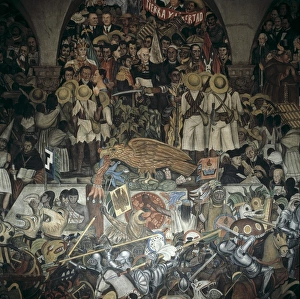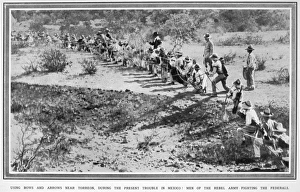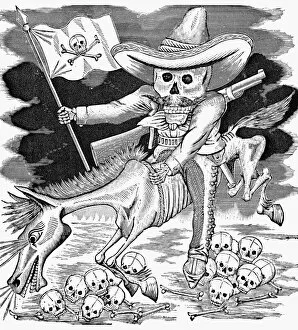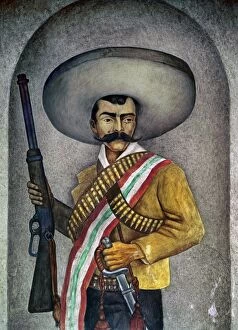Zapatista Collection
"Zapatista: A Revolutionary Icon in Mexican History" The Zapatista movement, named after the renowned Emiliano Zapata
All Professionally Made to Order for Quick Shipping
"Zapatista: A Revolutionary Icon in Mexican History" The Zapatista movement, named after the renowned Emiliano Zapata, continues to resonate as a symbol of resistance and social justice in Mexico. This caption explores various aspects related to the Zapatistas, including Diego Rivera's iconic mural "History of Mexico, " which vividly depicts their struggle. Emiliano Zapata himself is captured in a black and white photograph, his stoic gaze reflecting determination and unwavering commitment to the cause. The Ballad of Eufemio Zapata further immortalizes this legendary figure through song, ensuring that his legacy lives on. In addition to Rivera's mural, other artworks like the Zapatista caricature showcase how these revolutionaries were depicted during their time. Their image was often romanticized or vilified depending on one's perspective. Photographs from the Mexican Revolution offer glimpses into the harsh realities faced by insurgents. Wounded fighters being carried away after battles at Juarez remind us of the sacrifices made for change. Meanwhile, images capturing Pancho Villa's victorious army driving out Federal troops from Torreon highlight moments of triumph amidst chaos. The resilience and resourcefulness displayed by Villa's men are exemplified by an astonishing scene where they fight with bows and arrows against better-equipped adversaries. Such unconventional tactics demonstrate their indomitable spirit despite facing overwhelming odds. Even locomotives became part of this tumultuous era; soldiers perched atop them during battles serve as a testament to both innovation and desperation amidst war-torn landscapes. Revolutionary couples also played significant roles in shaping history; photographs capture two such pairs who fought side-by-side for a brighter future. These images humanize these figures beyond mere icons - they become individuals driven by love for each other and their country. José Guadalupe Posada's zinc engraving titled "Dead Revolutionary" adds another layer to understanding this period.

















